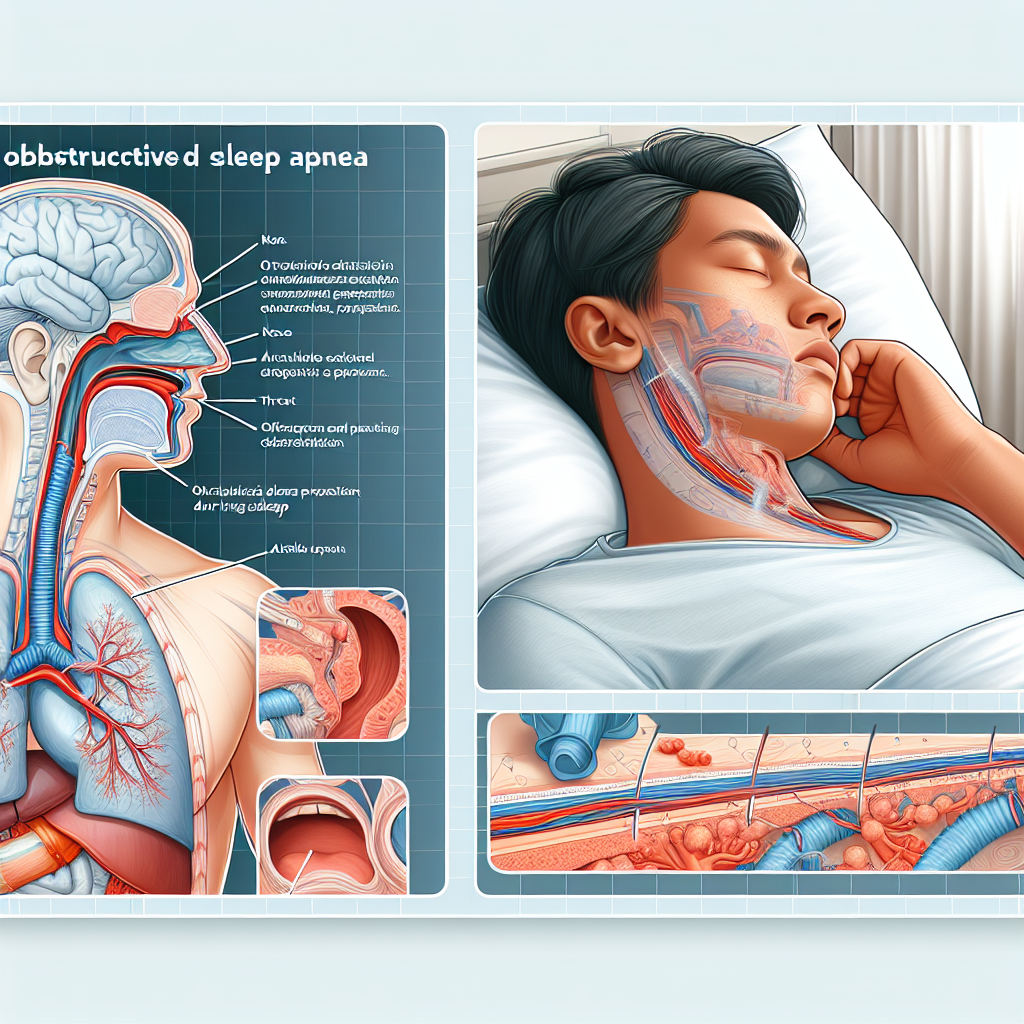Obstructive Sleep Apnea (OSA) is a common yet serious sleep disorder that causes individuals to stop breathing during sleep. People with this condition often snore loudly or make choking noises as they attempt to breathe. This article will provide comprehensive information and understanding about Obstructive Sleep Apnea.
What is Obstructive Sleep Apnea?
Obstructive Sleep Apnea is a chronic condition characterized by repetitive interruptions of breathing during sleep due to the physical obstruction of the upper airway. These interruptions, known as apneas, restore when the brain signals the body to wake up to resume breathing. These disruptions can interrupt sleep several times an hour, leading to poor quality of sleep and many health issues.
Causes of Obstructive Sleep Apnea
Obstructive sleep apnea occurs when the muscles in the back of the throat fail to keep the airway open, despite efforts to breathe. Factors that may contribute to OSA include obesity, consumption of alcohol, close-fitting oral appliances, certain medications, smoking, and even some medical conditions like hypothyroidism and acromegaly.
Symptoms of Obstructive Sleep Apnea
Common symptoms of OSA include loud snoring, observed episodes of stopped breathing during sleep, abrupt awakenings accompanied by shortness of breath, awakening with a dry mouth or sore throat, morning headache, difficulty staying asleep, excessive daytime sleepiness, difficulty concentrating during the day, and mood changes.
Treatment of Obstructive Sleep Apnea
Treatment for OSA varies depending on the severity of symptoms and any underlying conditions. Options include lifestyle changes like losing weight, quitting smoking, and avoiding alcohol. Many individuals with OSA benefit from continuous positive airway pressure (CPAP) therapy, which delivers air pressure through a mask while you sleep, keeping your upper airway passages open. For severe cases, surgery may be an option.
Risks of Untreated Obstructive Sleep Apnea
If left untreated, OSA can lead to numerous health issues such as high blood pressure, stroke, heart disease, diabetes, depression, worsening of ADHD, and headaches. It can also cause severe daytime fatigue that can lead to accidents or poor performance at work or school.
Conclusion
Obstructive Sleep Apnea is a serious sleep disorder that, if left untreated, can lead to a host of other health-related issues. However, with the right understanding, diagnosis, and treatment, it can be managed effectively. If you or someone close to you is showing signs of OSA, it’s crucial to talk to a healthcare provider and get evaluated.
FAQs
1. Can you diagnose OSA at home?
Yes, a home sleep apnea test can be an option to diagnose OSA. However, you must discuss this with your doctor, who will recommend the best course of action depending on your symptoms and overall health.
2. Can I have sleep apnea without snoring?
Yes, though snoring is a common symptom among individuals with OSA, it’s not always present. Talk to your doctor if you’re excessively tired during the day, have trouble staying asleep, or have other symptoms of OSA.
3. Is obesity the only cause of OSA?
No, although obesity frequently contributes to OSA, it’s not the only cause. Other factors include age, gender (men are more likely to have OSA), smoking, drinking alcohol, and having certain genetic or medical conditions.
4. Can children get Sleep Apnea?
Yes, OSA can affect people of all ages, including children. Although it’s less common in children, tonsil or adenoid inflammation is often the culprit when it does occur.
5. Can OSA be cured?
While there is no ‘cure,’ many treatments can effectively manage OSA symptoms and prevent the associated health risks. This can significantly improve patients’ quality of life and overall health.

Leave a Reply